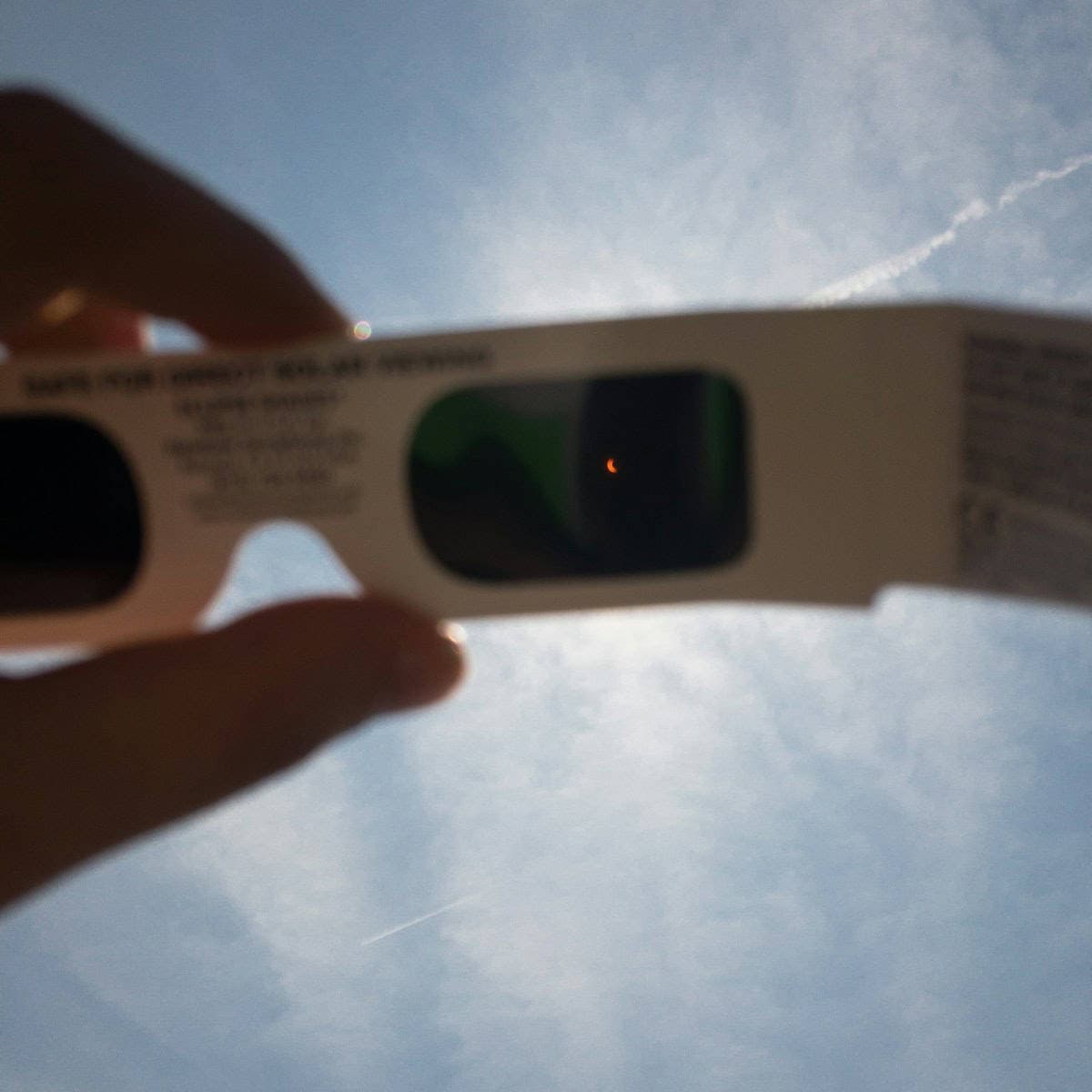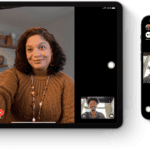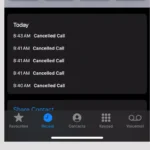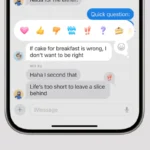To best capture a total solar eclipse with your smartphone:
– Use a special filter on your phone’s camera lens to protect it and get better results.
– Ensure your phone has enough storage space and battery life.
– Practice using your camera app’s manual settings to control exposure and focus.
– Find a good spot to view the eclipse and set up your phone on a tripod for steady shots.
– Avoid zooming in too much to maintain image quality.
– Take photos at different stages of the eclipse to capture its changes over time.
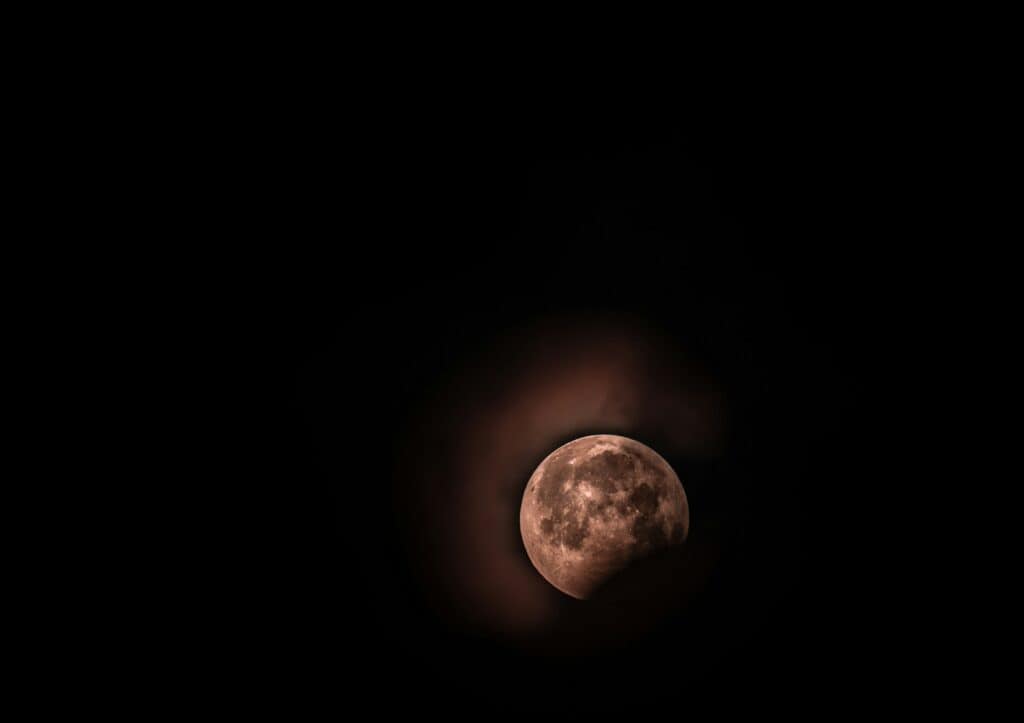
Capturing Celestial Wonders with Your Smartphone
Safety First
Never look directly at the sun, even during an eclipse, without proper eye protection. This includes looking through your phone’s viewfinder or camera lens. Always use certified solar eclipse glasses or solar filters designed for your phone’s camera.
Gear Up
- Solar Filter: A must-have for capturing the partial phases of the eclipse. Attach a certified solar filter to your phone’s camera lens to protect it from damage and ensure safe viewing.
- Tripod: Stabilize your phone for sharper images and videos, especially during longer exposures or when using a telephoto lens attachment.
- Telephoto Lens Attachment: Optional, but highly recommended. A telephoto lens attachment allows you to capture closer views of the eclipse, revealing details like the sun’s corona during totality.
Camera Settings
- Manual Mode: If available, switch to manual mode to control focus, exposure, and ISO settings.
- Focus Lock: Manually lock focus on the moon or a distant object to prevent your phone from constantly searching for focus during the eclipse.
- Exposure: Adjust exposure based on the phase of the eclipse. Use lower exposure during the brighter partial phases and higher exposure during totality.
- ISO: Start with a low ISO (e.g., 100) and increase it if needed for darker phases of the eclipse.
- Burst Mode: Use burst mode to capture multiple images quickly, increasing your chances of capturing the perfect shot of fleeting moments like the diamond ring effect.
- RAW Format: If your phone supports it, shoot in RAW format to retain more image data for better post-processing flexibility.
Composition Tips
- Wide-Angle Shots: Capture the grandeur of the eclipse by including the surrounding landscape in your photos.
- Foreground Interest: Add depth and context to your images by including elements in the foreground, like trees, buildings, or people.
- Time-Lapse: Record the changing light and atmosphere throughout the eclipse with a time-lapse video.
- Totality Focus: During totality, focus on capturing the sun’s corona and the dramatic darkening of the sky.
Key Phases to Capture
| Eclipse Phase | Camera Settings | Composition Tips |
|---|---|---|
| Partial Phases | Solar filter, low exposure, low ISO | Include landscape and foreground elements |
| Diamond Ring | Burst mode, adjust exposure | Capture the fleeting moment of the last bead of sunlight |
| Totality | Remove solar filter, higher exposure, adjust ISO | Focus on the corona and darkened sky |
| Diamond Ring (Reappearance) | Burst mode, adjust exposure | Capture the first bead of sunlight after totality |
| Partial Phases | Solar filter, low exposure, low ISO | Continue capturing the receding eclipse with landscape elements |
Remember to take breaks from photography to experience the eclipse firsthand. It’s a rare and awe-inspiring event, so enjoy the moment!
Key Takeaways
- Use a solar filter on your phone’s camera for safety and better images
- Practice with your camera app’s settings before eclipse day
- Take photos at different stages without zooming in too much
Preparing Your Smartphone for Eclipse Photography
Taking photos of a solar eclipse with your phone needs some planning. The right gear and setup can help you capture this rare event safely.
Choosing the Right Equipment
A smartphone with a good camera is key for eclipse photos. iPhones and high-end Android phones work well. Avoid using digital zoom as it lowers image quality. Instead, get a clip-on telephoto lens for your phone. This lets you zoom in without losing detail.
A tripod keeps your phone steady for sharp shots. Pick a small, lightweight tripod that’s easy to carry. Some tripods come with phone mounts built-in.
Don’t forget a solar filter for your phone’s camera. This protects the lens from damage. You can buy special eclipse filters or use a piece of solar film meant for cameras.
Setting Up Your Camera
Start by cleaning your phone’s camera lens. Smudges can blur your eclipse photos.
Open your phone’s camera app. Turn off the flash. Set focus to infinity if your app allows it. This keeps distant objects sharp.
For more control, use a manual camera app. These let you adjust settings like ISO and shutter speed. Good options include Halide for iPhone or Camera FV-5 for Android.
Enable RAW photo mode if your phone has it. RAW files capture more detail than JPEGs.
Safety Measures
Never look at the sun directly through your phone’s camera. It can hurt your eyes.
Always use a proper solar filter on your phone’s camera lens. Regular sunglasses or DIY filters aren’t safe.
Don’t remove the filter until the sun is fully covered. Put it back on as soon as the eclipse ends.
Keep your phone cool. Long sun exposure can make it overheat. Take breaks between shots if needed.
Test your setup before the big day. Practice taking photos of the regular sun with your filter on.
Capturing and Enhancing the Eclipse
Taking great photos of a solar eclipse with your phone needs some key steps. These tips will help you get the best shots and share them with others.
Photography Techniques
Use a solar filter on your phone’s camera lens to protect it. Don’t zoom in, as this can lower image quality. Instead, try a clip-on telephoto lens for your phone. Set your camera app to Pro or Manual mode if it has one. This lets you change settings like focus and exposure.
For the best shots, use a tripod to keep your phone steady. A Bluetooth remote can help avoid shake when pressing the shutter. Try burst mode to catch different stages of the eclipse. Lock your focus on the sun before it gets fully covered.
During totality, you can remove the filter for a short time. Be ready to put it back on quickly when the sun starts to show again. Take photos of your surroundings too – it gets very dark!
Post-Processing and Sharing
After the eclipse, look through your photos and pick the best ones. Most phone apps have basic editing tools. Try adjusting the brightness and contrast to make the sun’s details stand out more. Crop your images to focus on the eclipse itself.
For better editing, transfer your photos to a computer. Software like Photoshop or free options like GIMP give you more control. You can sharpen the image, reduce noise, and fine-tune colors.
Share your best shots on social media. Instagram is great for eclipse photos. Add hashtags like #SolarEclipse2024 so others can find them. You could make a time-lapse video if you took many photos during the event.
Additional Tips for Enhanced Photography
Raw format saves more data than JPEG. If your phone offers it, use raw for the best editing options later. Some phones have special night or astrophotography modes. These might work well for the dark sky during totality.
Try to include some landmarks in your shots. This adds context and scale to the eclipse. If you’re in the path of totality, capture the “diamond ring” effect as the sun peeks out again.
Don’t forget to enjoy the moment too! Set a limit on how much time you spend with your phone. The eclipse is a rare event that’s amazing to see with your own eyes (through eclipse glasses, of course).
Frequently Asked Questions
Taking pictures of the solar eclipse with your phone can be exciting and rewarding. Here are answers to common questions about capturing this rare event safely and effectively.
What settings should I use to photograph the solar eclipse with my smartphone?
Set your phone camera to manual mode if possible. Lower the ISO to 100 or 200. Use a fast shutter speed like 1/1000th of a second. Adjust exposure compensation to -2 or -3 to avoid overexposure. Focus on infinity for sharp images of the sun.
Is it safe to take a picture of an eclipse using a phone camera without damaging it?
It’s generally safe for brief shots. But long exposures can harm the camera sensor. Use a solar filter on the lens for added protection. Don’t look at the sun through your phone screen. Always wear certified eclipse glasses when viewing directly.
What are the best smartphone apps for capturing an eclipse?
Eclipse photography apps like Solar Eclipse Exposure Calculator help with settings. Camera+ 2 and ProCam offer manual controls. Sun Surveyor shows the sun’s path. Some apps even remind you of key eclipse phases.
Can a standard smartphone camera be used to take a high-quality shot of a solar eclipse?
Yes, with the right technique. Use manual settings and a tripod for stability. Zoom in as much as possible. Clean the lens. Take many shots to increase chances of a good one. Edit photos later to enhance details.
How can I take a selfie with the solar eclipse safely in the background?
Use the front camera and position yourself with the eclipsed sun behind you. Wear eclipse glasses. Don’t look directly at the sun. Use a wide-angle lens if your phone has one. Take several shots quickly to capture the best moment.
What alternative methods are available to view the eclipse if I don’t have eclipse glasses?
Make a pinhole projector with cardboard. Use a colander to create multiple projections. Try eclipse-viewing cards with safe filters. Watch live streams online. Local libraries or astronomy clubs may offer safe viewing events.

